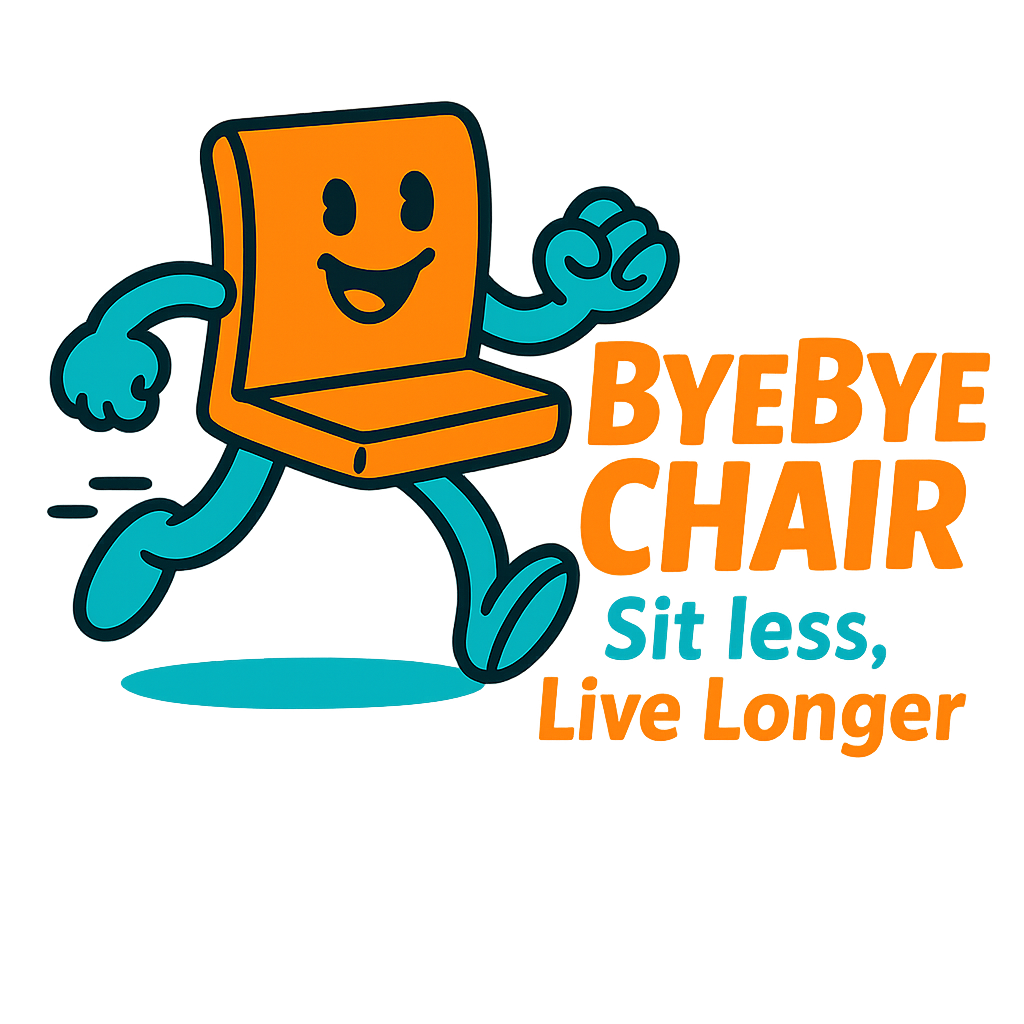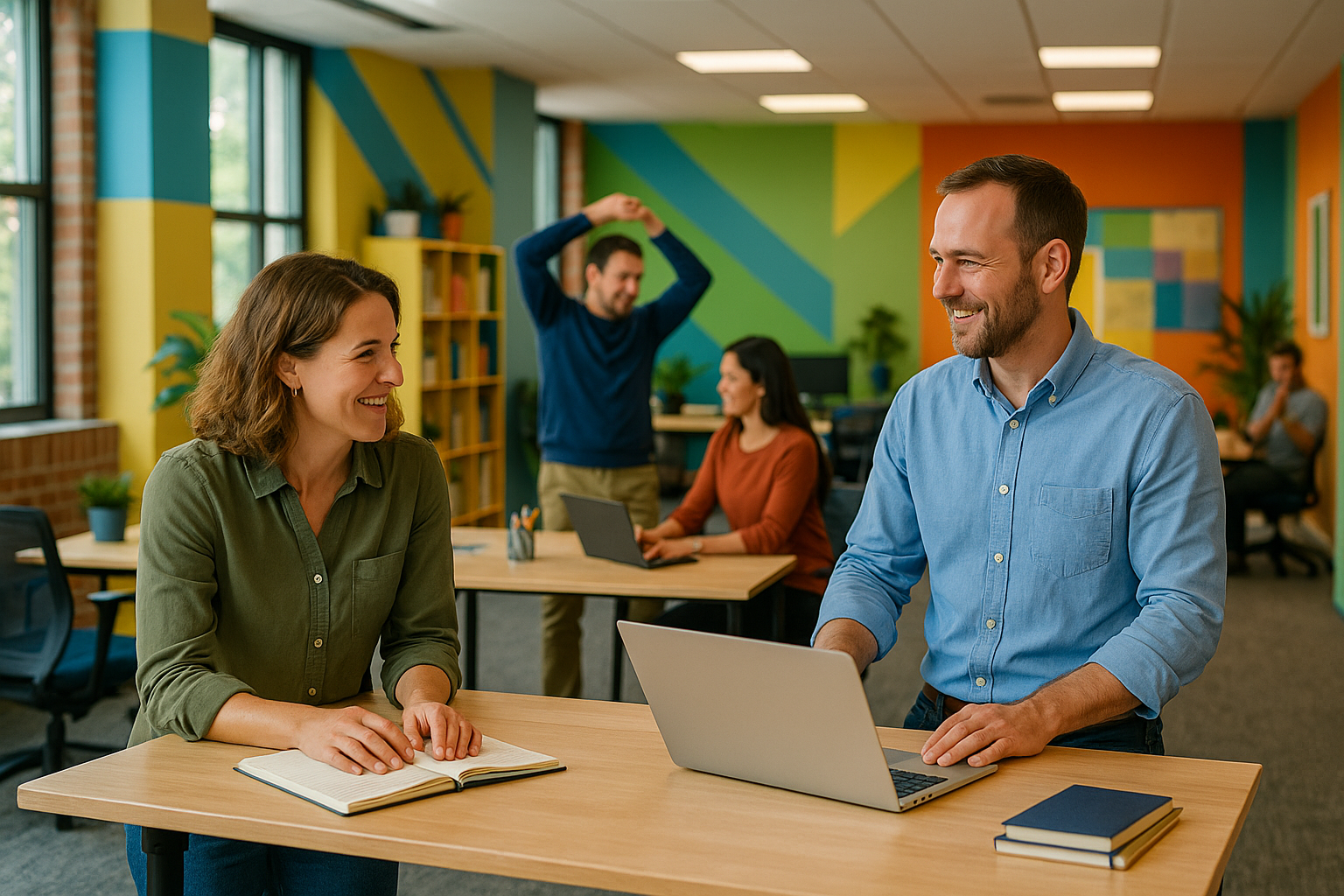The Hidden Cost of Sitting Too Much
We live in a world designed for sitting. Office chairs, conference rooms, cars, couches—nearly every space encourages us to stay seated. Yet research is clear: prolonged sitting harms health, productivity, and long-term mobility.
Sedentary behavior is linked to:
- Higher risks of obesity, diabetes, and cardiovascular disease
- Poor posture and chronic back or neck pain
- Decreased focus, energy, and creativity
- Muscle stiffness and reduced flexibility
Even if you hit the gym three times a week, long stretches of sitting still take a toll. The solution? Redesign your environment to encourage movement. By tweaking your workspace and routines, you can sit less without even thinking about it.
Why Environment Design Matters
Willpower alone rarely works. Telling yourself to “sit less” is like promising to “eat better”—good in theory, but hard to sustain.
Environment design, on the other hand, makes healthy choices automatic. When your surroundings nudge you toward standing, stretching, or walking, you move more without relying on discipline.
Think of it as building friction for sitting and reducing friction for moving. The less effort it takes, the more consistent you’ll be.
Standing Desk Tricks That Actually Work
Standing desks are one of the most popular tools for reducing sedentary time—but they’re often misused. Here’s how to make them effective and sustainable:
1. Start with Small Intervals
Jumping from sitting all day to standing eight hours is a recipe for sore feet and fatigue. Begin with 20–30 minutes per session, gradually increasing over weeks.
2. Use a Footrest or Balance Board
Placing one foot at a time on a small footrest reduces lower back pressure. A balance board or anti-fatigue mat adds subtle movement, keeping leg muscles active.
3. Alternate Sitting and Standing
The sweet spot is sit for 30–45 minutes, stand for 20–30 minutes. Use timers, apps, or even meetings as cues to switch positions.
4. Raise More Than Just Your Desk
If possible, elevate your monitor, keyboard, and mouse together. Poor ergonomics cancel out the benefits of standing. Your screen should be at eye level, and wrists flat while typing.
5. Pair Standing with Easy Tasks
Stand while answering emails, brainstorming, or on casual calls. Save seated time for deep focus work that benefits from stability.
Meeting Hacks: Moving Beyond the Conference Table
Meetings are notorious sit-fests, but they don’t have to be. With small changes, you can turn them into movement opportunities.
1. Walking Meetings
For one-on-one check-ins or brainstorming sessions, suggest a walk-and-talk. Research shows walking boosts creativity by up to 60%. Bonus: it feels less formal, encouraging more open dialogue.
2. Standing Huddles
Short team updates are perfect for standing. A standing meeting often finishes faster because people stay focused and skip unnecessary chatter.
3. Active Breaks in Long Meetings
For sessions over an hour, build in a 2-minute stretch break. Frame it as a productivity booster, not just a health choice. Everyone benefits from a reset.
4. Use High Tables or Countertops
If your office or home has high counters, claim them for quick group discussions. Being upright keeps energy higher and meetings shorter.
Turning Distractions Into Movement Cues
Not all distractions are bad—if you use them wisely. Common interruptions can become reminders to move.
- Phone calls: Stand or pace while talking. If you’re on a headset, walk a few laps.
- Notifications: Each ping from email or chat can cue you to stretch, do calf raises, or roll your shoulders.
- Refills: Instead of a giant water bottle, use a smaller glass so you walk to refill more often.
- Printing: Place the printer in another room. Every page becomes a step count boost.
- Bathroom breaks: Use the farthest restroom instead of the closest one.
By reframing interruptions as micro-breaks, you turn them from time-wasters into built-in movement snacks.
Home Office Movement Triggers
If you work from home, it’s easy to fall into all-day sitting. Here’s how to design movement into your space:
- Place reminders in sight: A yoga mat, resistance band, or kettlebell near your desk encourages quick use.
- Work near a window: Looking outside naturally cues you to stand up, stretch, or walk to the view.
- Use household tasks: Let laundry cycles, kettles boiling, or oven timers remind you to move.
- Adopt the “upstairs rule”: If you have multiple floors, intentionally keep items you use upstairs to force stair climbs.
Office Design Tips That Encourage Movement
Companies and teams can do even more to help employees sit less:
- Centralized trash bins and printers: Encourage people to walk, not swivel.
- Adjustable desks for teams: Offer shared standing areas in addition to seated spaces.
- Movement-friendly culture: Normalize stretch breaks instead of side-eyeing them.
- Gamify movement: Use apps or trackers to create friendly competition in step counts or break consistency.
A culture that celebrates health benefits not only employees but also the organization through better energy, fewer sick days, and higher productivity.
Common Myths About Sitting Less
❌ Myth 1: Standing all day is better than sitting.
✅ Truth: Prolonged standing has its own risks. Alternating positions is key.
❌ Myth 2: Movement breaks distract from work.
✅ Truth: They improve focus and creativity, often saving time overall.
❌ Myth 3: You need expensive equipment.
✅ Truth: Many changes cost nothing—like rearranging furniture or taking phone calls on foot.
Frequently Asked Questions
Q: How much should I aim to sit per day?
A: Experts suggest breaking up sitting every 30–60 minutes and aiming for at least 2–3 hours of non-sitting time during the workday.
Q: Can I replace exercise with standing desks?
A: No. Standing more helps, but it doesn’t provide the cardiovascular or strength benefits of real exercise.
Q: Will my coworkers think it’s weird?
A: Not anymore. Standing desks, walking meetings, and stretch breaks are increasingly common—and often appreciated.
A Sample Daily Routine to Sit Less
Here’s how a re-designed workday might look:
- Morning: Start with 20 minutes standing at your desk.
- Mid-morning: Take a walking call around the office or house.
- Before lunch: Do seated-to-standing hip openers for 1 minute.
- Early afternoon: Host a 20-minute standing meeting.
- Late afternoon: Refill your water and take the long route back.
- End of day: Review tasks standing, then finish with a short stretch.
By day’s end, you’ve added 2–3 hours of non-sitting time—without blocking off gym sessions or losing productivity.
Final Thoughts
Your environment shapes your habits. If your space encourages sitting, you’ll sit. If it encourages movement, you’ll move.
The good news is you don’t need dramatic changes. Standing desk tricks, meeting hacks, and movement cues can transform your day one step at a time.
👉 Don’t wait for motivation. Redesign your space today to make sitting less the easy choice.
Your health, focus, and energy depend on it.

